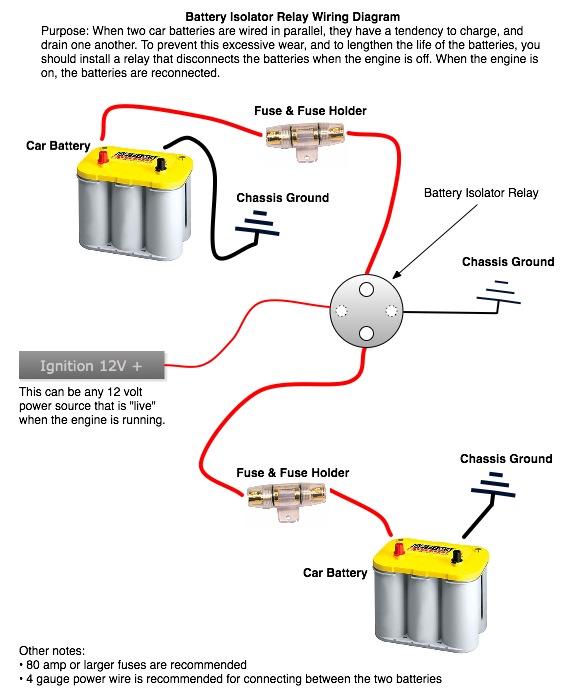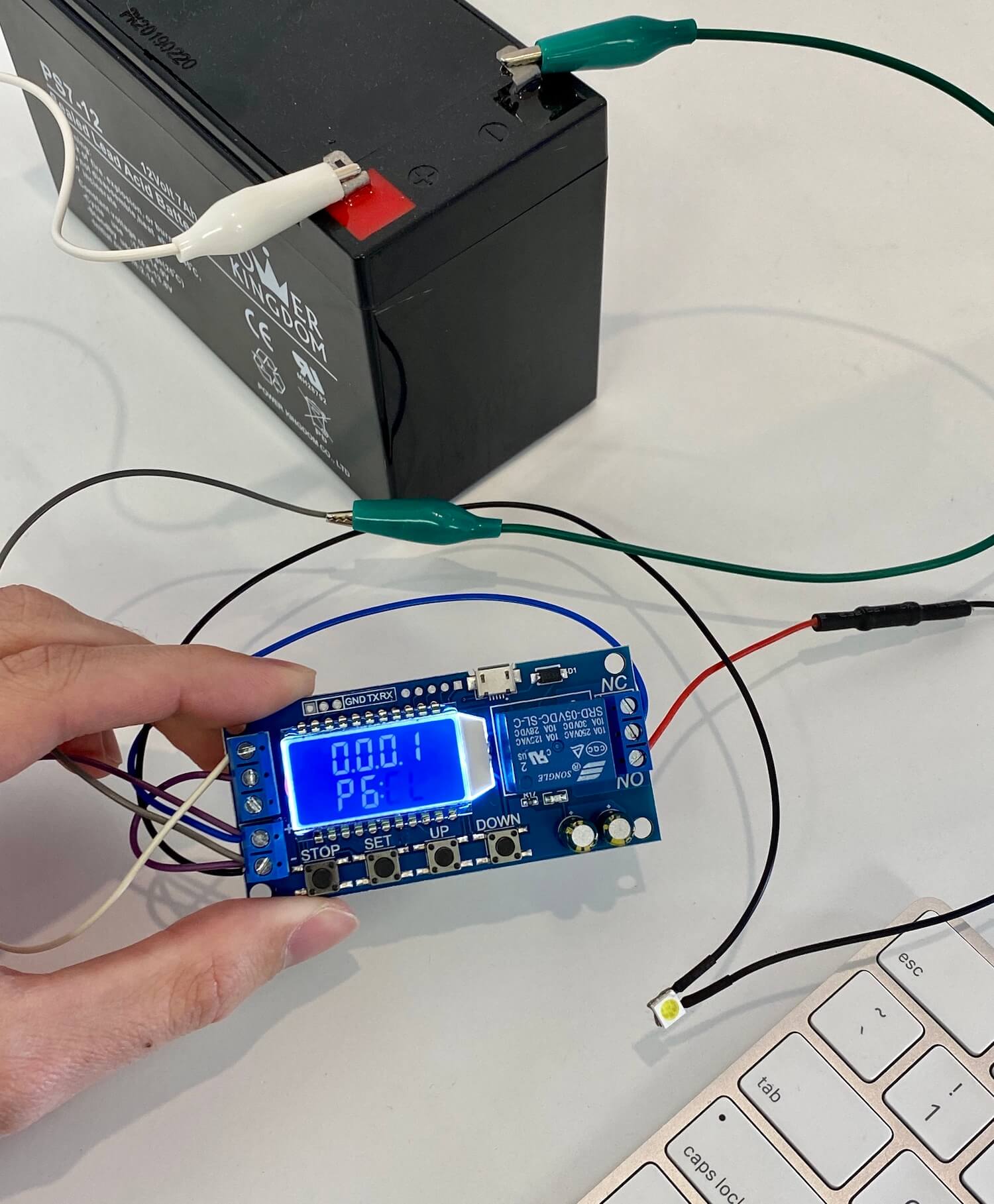Is your light bar draining your battery?
One of the main reasons that a battery gets damaged is due to sulfur crystals that grow on the plates, this is called sulfation and prevents the electrons from flowing through the affected parts. There are many more reasons why your newly installed LED light bar might be draining your battery, we’ve compiled a list of tips and tricks to help you make ensure that it never happens again.
Follow these 8 tips on how to keep a light bar from draining your battery:
- Connect your light bar directly to the vehicle battery or another DC voltage source. If you’re going to use a power supply, make sure its voltage output is within the light bar’s specifications. Also, make sure it can supply the maximum current your light bar draws.
- Use a wire gauge that matches or exceeds the maximum current of your LED light bar.
- Fuse power wires to the expected current draw, not the wire size.
- Use an automotive switching relay if the light bar draws 10A or greater.
- With or without a relay, use a cab switch rated for at least 10 amps.
- Secure the relay to a suitable location, and test the light to make sure the circuit works.
- Use waterproof wiring connectors. Check for these at a local marine shop.
- Avoid unnecessary splices, but use a snap-in connector at the light bar to ease removal.
How fast will a light bar drain a battery?
Correctly calculating the time it takes your battery to become drained may just save your light bar from draining your battery. You can calculate exactly how fast your LED light bar will drain your battery by following this method:
Say you had a full 66Ah battery, you would calculate the drainage time like this:
66Ah/22A=3h.
However, it’s best to not use your battery to the full amount of time that you’ve calculated, it’s always better to use less. It’s also important to note that your battery will degrade after a few years, so the capacity won’t be the full Ah amount indicated.
A battery that’s almost depleted won’t be able to deliver the same maximum current as a full battery and you’ll experience some problems getting your motor started, which should be especially evident when it’s cold out.


I mounted and wired up my 20″ LED light bar, and 2 small LED pods on my A pillar. I used an aftermarket complete wiring harness with 2 leads for lights, an inline fuse, switch, and terminals that bolt right to the battery terminals. I ran one lead to my 20″ light bar, spliced the two pods into the second lead, and routed the cable through the engine compartment to the battery, and through the firewall into the cabin switch location. I then hooked the connectors to the battery and Viola’ it works great. However, I quickly noticed that when I use the lights (while engine is running) for as little as 5-10 minutes, everything works great, there are no issues, until I turn my Jeep off. When I go to restart it, the battery has drained enough it wont crank. If I jump it, or recharge it, it will run fine for the next few days or weeks, until I use the light, then…bam, won’t start. I will admit, I am not driving it for great lengths of time, its my in town cruiser, not my city commuter, but I think I am driving it long enough for the alternator to do its job…. any suggestions?
Hey Brian, sorry to hear of the trouble. It sounds like you’ve wired everything correctly which is good! My first guess is that there’s something wrong with your car battery. I suggest taking your Jeep to an auto mechanic to get the battery tested. Or you can try testing it yourself by using a voltmeter. When the headlights are on, and the outside temperature is about 80°F, there should be a voltage drop of at least 11.8 volts (25% charged), and ideally 12.5 volts, between the positive and negative terminals. You could also use a hydrometer to check that the specific gravity of the liquid inside the battery is between 1.265 and 1.299 specific gravity.
Do you notice how a cell phone or laptop battery works great in the first few months, but after a few years, it doesn’t hold a charge for very long? Car batteries are similar in that they work great for a few years, but after some time, and especially when stressed with extra power consumption from lots of accessories, they start to wear out.
The easiest solution is to replace your battery. I suggest investing in a high performance battery such as the Optima YellowTop (about $270 on Amazon). This battery is specifically designed for automotive enthusiasts who need to run lots of power hungry accessories such as lights, winches, subwoofers, etc.
So I have a 2004 dodge hemi 5.7L and I installed a foot long led light strip and I tested it and there is power flowing and it is grounded and it goes to a switch in the cab I installed but the light does not work even though I tested before installing. Also the switches I used have there own led lights per switch and are always on even when the vehicle is off, Will the drain to much power?
I’m having the same issue as Brian Ruether, but my battery is brand new……. Duracell AGM, 750 CCA. I also just changed out the alternator and regulator……..86 Dodge Ramcharger.
I noticed that my voltage gauge will drop to around 10.5-11.0 volts when I have my light bar (33”) and heater on, but when everything is off it soon goes back to reading 14.5 – 15.0 volts. This occurred while in 4W low and relatively low RPM.
I’m curious how other people, who are running much larger light systems, address this issue.
I recently had 2 hood pod lights installed on my tacoma, but i noticed the switch they installed is on even when my car is off. Would this little switch Eventually drain my battery?
It sounds like you’re referring to an LED indicator light in a switch. Theoretically, a tiny LED will eventually drain your battery, but because the current draw is so low, it would take many years. There’s other circuits in your vehicle that draw residual current and will also drain your battery. Practically, you don’t need to worry.
I’m having the same problem with my WHELEN Justice series bar. it’s hooked directly to the battery and run to an in-line fuse to a switch. When my truck sits it drains the battery to the point where it causes a hard start due to the battery drain.Any suggestions on how to fix the issue?
It sounds like your battery is going bad and needs to be replaced. Most batteries are warrantied to last 4 years, but only 30% make it that far. If you’re using a lot of power-hungry accessories, and frequently discharging/recharging your battery, then its lifespan will be shortened.
One option is to install a second battery in your truck. You can then power all of your accessories from this second battery when the engine is off, thereby preserving the life of your main battery. You can wire the second battery in parallel (both positive terminals together, and both negative terminals together). To prevent the two batteries from charging/discharging each other when your engine is off, you’ll want to use a 200-amp battery isolator relay. This will connect the two batteries together when your engine (and alternator) is running, and disconnect them when the engine is off.
200-amp battery isolator relay:
https://www.oznium.com/wire-12v-and-relays/stinger-expert-cable
8-gauge wire:
https://www.oznium.com/wire-12v-and-relays/stinger-expert-cable
My truck has 2 batteries because it is a diesel, and they’re only about a year
OK guys, dingy blonde question. How can I accomplish this? As a deterrent, I want to keep a Chevy Silverado 4.3L V6 truck (with a roof 48″ LED light bar) parked in a parking lot every night. Engine will not be running. Want to rig the light bar to come on for about 10 minutes every 1-2 hrs. What wattage of 48″ roof light bar should I get? AND, seems I’d have to install a 2nd battery for the light bar’s power? AND, wonder if there’s an ‘on/off switch’ that can be used/programed to automatically turn light bar on/off periodically? Step-by-step instructions from someone of specific equipment (light bar wattage, type/size battery, programmable switch, wiring type/size, etc) needed to do this would be much appreciated. Thank you!
Hi Barb,
I’d suggest choosing a light bar that is just bright enough for your needs, but not overly bright. Perhaps something around 100W to 150W.
Optima Yellow Top batteries are great (but a bit expensive at $200+). Otherwise, pretty much any car battery will work, just not as well.
This can be broken down into two steps:
Step 1 – Setup second battery with isolator relay
We sell the battery isolator relay ($44.99) and 8 gauge power wire ($1.80 per foot)
Here’s a diagram of how to connect your second battery to your main battery:

Step 2 – Setup timed on/off switch
We have a special programmable on/off relay which can be setup to turn the lights on for 10 minutes, and off for 1 to 2 hours. Its $34.99, but for now it’s a special order item. If you want one just let me know, we have it in stock at our Colorado warehouse.
It looks like this:

Just installed under light. Replaced truck battery one week before and it’s killing my battery with truck off in driveway overnight while lights are off. This stinks. Going to have to rewire not to battery. Feeling your pain!!
So about two months ago I installed 5 light bars on my 1990 Toyota pickup. They are 2 pods, 2 foot long light bars and one 20 inch light bar. In the last two weeks I have been loosing battery charge. I took my alternator in and got it tested and it tested fine but looked like it was getting a little hot. I threw a new battery in it and it had helped for two weeks but is back to killing my pickup battery do I need to put an bigger alternator in it or cancel out the light bars. I’ve seen more light bars on pickups similar to mine.
I have Vivid light bar I installed on my Kawasaki KRX . The voltage reads 14.0 volts when I start it, when I turn on the light bar the voltage starts dropping. I used 8 gauge marine wiring wired to the battery with a 30 amp in line fuse also 8 gauge. 30 amp Relay to 30 amp switch. Not sure what to do next ?